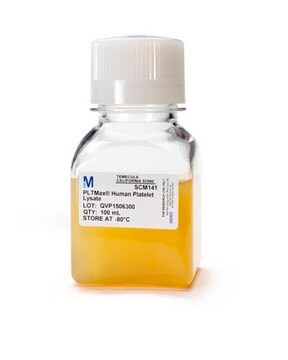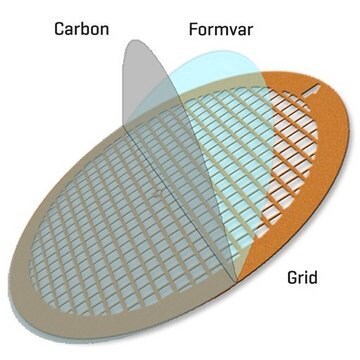AB3200
Anti-LIM-1 Antibody
Chemicon®, from rabbit
Sinonimo/i:
Anti-Anti-LIM-1, Anti-Anti-LIM1
About This Item
Prodotti consigliati
Origine biologica
rabbit
Livello qualitativo
Forma dell’anticorpo
purified immunoglobulin
Tipo di anticorpo
primary antibodies
Clone
polyclonal
Reattività contro le specie
human, frog, fish, mouse
Produttore/marchio commerciale
Chemicon®
tecniche
immunocytochemistry: suitable
immunofluorescence: suitable
immunohistochemistry: suitable (paraffin)
immunoprecipitation (IP): suitable
western blot: suitable
N° accesso NCBI
N° accesso UniProt
Condizioni di spedizione
wet ice
modifica post-traduzionali bersaglio
unmodified
Informazioni sul gene
human ... LHX1(3975)
Specificità
Immunogeno
Applicazioni
Our photo was produced from immersion fixation of chicken embryos in cold 4% PFA for 15-30 minutes, then sectioning was performed on a cryostat.
Works on paraffin embedded sections when sections are either lightly PFA fixed or fixed with acetone, ethanol or fixative suggested below.
SUGGESTED IMMUNOHISTOCHEMISTRY PROTOCOL FOR AB3200
The best fixative is MEMFA. 10X stock solution for MEMFA: 1 M MOPS, 20 MM EGTA. 10 mM MgSO4, 38% Formaldehyde. Fixation 1 hour, 2 x 15 min methanol. Following this protocol embryos may be stored in methanol at -20°C indefinitely or immediately embedded in paraplast. Best results on paraffin sections 6-10 micron thick.2) Staining following deparaffinization in xylene and a row of alcohol wash two times in water. Block in 2% Boehringer Mannheim reagent in 0.1 M maleic acid, pH 7.5, 150 mM NaCl for one hour at room temperature.3) Dilute the AB3200 in same blocking reagent and incubate overnight at 4°C or for at least 5 hours. Wash three times in PBS, 10 min each.4) Incubate with alkaline phosphatase conjugated secondary antibody (for example Chemicon Catalog Number AP132A. Develop with BCIP/TNBT (Chemicon Catalog Number ES007-100ML).5) For sections always use Digene silanated slides or Superfrost plus from Fisher as some times you may need to boil sections in 6 M urea for 5-6 min. in microwave at 80% power following deparaffinization to increase signal. That is especially useful if tissues were fixed in PFA.6) Sometimes it is necessary to predeplete antibody on hyperfixed embryos to lower background (especially for staining species other than frog and for whole-mounts). Procedure: hyperfix frog or fish embryos in MEMFA for 36-48 hours at RT 30-50 embryos. Wash 2 X in methanol (see above). Apply antibody in final dilution in blocking reagent for one hour on rocking table. Collect super and apply to your embryos or sections. For whole mounts use the following procedure: after fixation, methanol and PBS; block in PBST + serum (PBS + 2 mg/mL BSA + 0.1% Triton X100 + 10% animal serum) one hour room temperature. Add first antibody in PBST + serum and incubate over night at 4°C. Wash in PBST (no serum) 4 times for 2 hours. Add secondary diluted in PBST + serum over night at 4°C. Wash in PBST four times for 2 hours. Develop staining.
Do not use tissues fixed overnight in PFA the antibody will not work.
Immunocytochemistry: 1:500 on P19 cell line, lightly fixed (2% PFA) 5-15 minutes, permeabilized with 0.1% triton X-100 or methanol ( 5′ air dry).
Western blot: 1:3,000-1:6,000
Immunoprecipitation: 1:200
Immunofluorescence 1:100
Optimal working dilutions must be determined by the end user.
Neuroscience
Developmental Neuroscience
Neuronal & Glial Markers
Stato fisico
Stoccaggio e stabilità
Note legali
Esclusione di responsabilità
Non trovi il prodotto giusto?
Prova il nostro Motore di ricerca dei prodotti.
Codice della classe di stoccaggio
10 - Combustible liquids
Classe di pericolosità dell'acqua (WGK)
WGK 2
Punto d’infiammabilità (°F)
Not applicable
Punto d’infiammabilità (°C)
Not applicable
Certificati d'analisi (COA)
Cerca il Certificati d'analisi (COA) digitando il numero di lotto/batch corrispondente. I numeri di lotto o di batch sono stampati sull'etichetta dei prodotti dopo la parola ‘Lotto’ o ‘Batch’.
Possiedi già questo prodotto?
I documenti relativi ai prodotti acquistati recentemente sono disponibili nell’Archivio dei documenti.
Il team dei nostri ricercatori vanta grande esperienza in tutte le aree della ricerca quali Life Science, scienza dei materiali, sintesi chimica, cromatografia, discipline analitiche, ecc..
Contatta l'Assistenza Tecnica.








